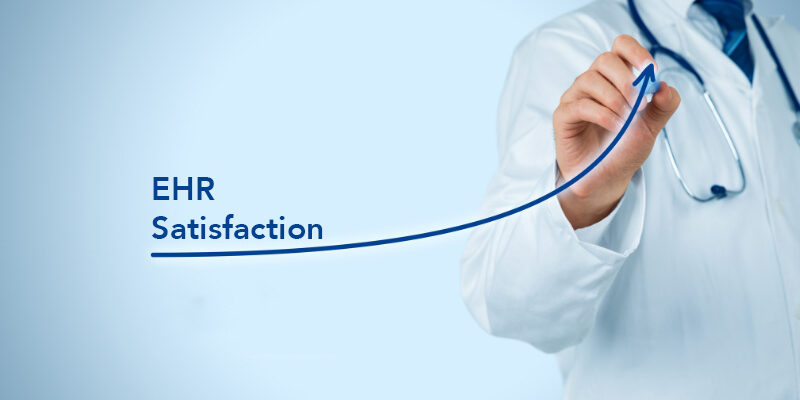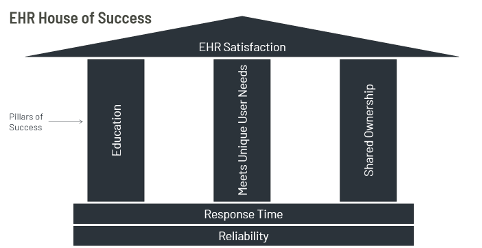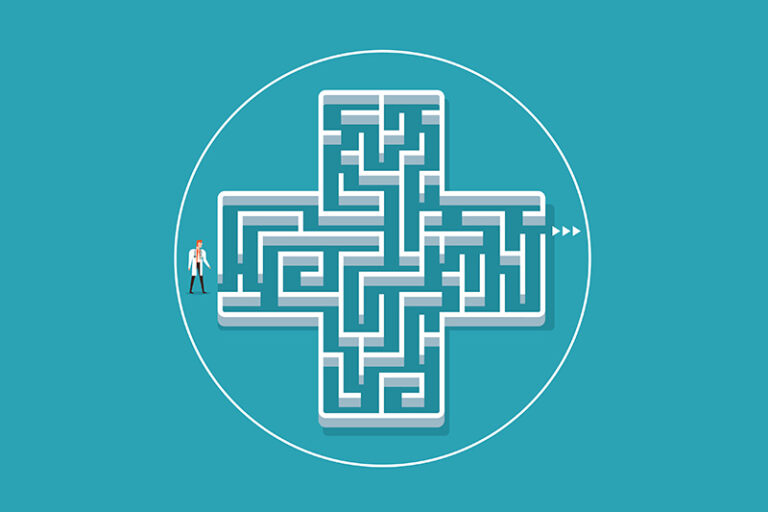
Liz Griffith
uPerform
Healthcare Insights Director
Welcome to the uPerform Thought Leader series, a collection of articles penned by industry leaders committed to improving health IT training and sharing their knowledge. Liz Griffith serves as the Healthcare Insights Director at uPerform and is a fiercely passionate champion for health IT training. Prior to her role at uPerform, Liz served as the Director of Customer Insights at KLAS Research, leading EHR satisfaction consulting and measurements.
EHR satisfaction refers to the belief that an Electronic Health Record (EHR) system enhances clinical practice and supports the delivery of optimal patient care. It is the confidence that the technology relied upon in the practice of medicine facilitates, rather than impedes, performance. Improving EHR satisfaction has become my personal mission, and I am delighted to see it finally getting the attention it deserves.
Reflecting on 2024, a highlight for me was attending the seventh annual KLAS Arch Collaborative Learning Summit. KLAS is dedicated to understanding the factors that influence EHR satisfaction. The organization was foundational to my career and is central to my commitment to EHR satisfaction.
This Learning Summit marked a significant milestone for KLAS, which has collected over 500,000 user survey responses from hundreds of health systems, establishing it as the leading authority on measuring EHR satisfaction.
Drawing from KLAS Research, my own experiences and uPerform client stories, I present an overview on EHR satisfaction, its importance and strategies to enhance EHR satisfaction within organizations.
Climbing out of the trough of disillusionment
Gartner’s technology hype cycle model effectively illustrates the challenges of technology adoption that KLAS Research aims to address through the Arch Collaborative research. Findings reveal that too many EHR users are entrenched in the “trough of disillusionment.”
Initially, clinicians had high expectations for EHR systems, but these were diminished by regulatory demands, non-user-centric workflows,
complex billing requirements and more. This has led to a perception that EHR systems are imposed upon them rather than designed for their benefit, ultimately decreasing EHR satisfaction.
In healthcare, rather than striving for a “plateau of productivity” our goal should be the “path to patient-centered care.” Clinicians want technology that enables them to provide the highest quality care, and healthcare organizations can help facilitate this by partnering and collaborating closely with clinicians.
What is EHR satisfaction?
KLAS Research is a company focused on highlighting healthcare technology trends, particularly those that significantly impact the industry. They assist health systems in making informed purchasing decisions about new technologies by publishing reports on EHR vendors, market share and user satisfaction. Despite these efforts, there was an underlying dissatisfaction among clinicians regarding EHRs, which was not captured in initial research, as it primarily involved interviews with senior leaders. This gap led to the 2017 launch of a survey targeting physicians who use EHRs daily, aiming to understand their experiences. Although the research has evolved, key insights remain consistent.
In its first year of data collection, KLAS Research identified three key “pillars” of EHR success:
- EHR Mastery: Assesses how well clinicians feel they have been trained to use the system effectively.
- Personalization: Evaluates the utilization of system tools for efficiency, such as report views and macros.
- Shared Ownership (or Governance): Examines how clinicians perceive their organization’s ability to implement, support and train on the EHR, including their evaluation of the EHR vendor’s product and their own efforts to master the tools.
KLAS Research’s initial report revealed that over 50% of the variation in EHR satisfaction is correlated with the quality of user training, indicating that education had a greater impact than the specific EHR in use or the level of personalization. As more data has been collected, education remains a critical factor in improving EHR satisfaction.
Additionally, KLAS Research identified a foundational issue in organizations that heavily invested in training and personalization but still struggled with satisfaction. Two survey questions consistently emerged as critical: “This EHR is reliable, with minimal downtime?” and “Does this EHR have a fast system response time?” When responses to these questions fell below a certain threshold, satisfaction was difficult to improve. Thus, KLAS Research established that the reliability and speed of the system are essential for the three pillars to enhance satisfaction, forming the foundation of the “EHR House of Success.”
“If you can’t measure it, you can’t improve it”
To enhance satisfaction, it is essential to measure it accurately. KLAS Research has developed a comprehensive framework of questions that assess various aspects of EHR satisfaction, including system reliability, integration, perceived efficiency, ease of learning and support for patient safety. These questions contribute to the Net EHR Experience Score (NEES), a metric ranging from –100 to 100, similar to a net promotor score.
By aggregating survey responses related to infrastructure, education, shared ownership and personalization, organizations can identify their strengths and weaknesses in achieving user satisfaction.
KLAS continually analyzes the data to provide insights on improving different facets of EHR satisfaction. Their reports cover topics such as EHR education, physician and nurse burnout, AI tool utilization, informatics governance boards and more. Notably, many reports highlight the pivotal role of EHR education in improving EHR satisfaction and other performance metrics. A search for “education” in the Arch Collaborative Learning Library yields references to over 40 reports.
The January 2024 report, “Easy Lifts for Quickly Improving EHR Satisfaction,” identifies making EHR education more accessible as the top recommendation for rapidly boosting satisfaction.

https://klasresearch.com/archcollaborative/report/easy-lifts-for-quickly-improving-ehr-satisfaction-2024/562
Enhancing access to education is a crucial component of improving a health system’s educational strategy. Traditionally, leaders were advised to encourage clinician participation in training by making it appealing, ensuring engaging trainers, and providing financial support. Despite implementing these strategies, clinicians often expressed frustration with training access, scheduling conflicts, and missing sessions due to shift timings. Asynchronous training has significantly mitigated these barriers by integrating educational resources into clinicians’ workflows. This approach allows them to access essential information, such as workflow tip sheets or videos, precisely when needed, enabling them to quickly return to patient care.
In the “Clinician Turnover 2024” report, KLAS Research identifies key strategies to mitigate clinician turnover, focusing on three main factors:
- Reducing burnout
- Enhancing EHR education
- Improving IT support
While addressing burnout is complex, improving EHR education and support is more straightforward. Many organizations have improved EHR training by integrating educational resources directly into the workflow, allowing clinicians to access assistance within the EHR. This approach has significantly improved help desk inquiries and improved support metrics, as noted in several case studies with uPerform clients.
For clinicians who left their organizations, 40% of nurses and 59% of physicians reported a need for better education. As systems contend with current and anticipated clinical staff shortages, retaining skilled nurses and physicians is increasingly crucial. This retention challenge extends beyond HR and requires collaboration among IT, clinical and operational leaders.
“The execution of change management and training is where most implementations fall short”
The EHR Implementations 2025 report by KLAS Research highlights the long-term negative effects of inadequate EHR training strategies on users. It emphasizes that successful implementations must consider both human and technical elements. Despite creating plans to address human factors, many leaders retrospectively acknowledge insufficient efforts in change management. Specifically, they often regret focusing solely on functionality training, neglecting the necessary mindset and process changes for effective adoption. Leaders frequently express a desire for more extensive training time and workflow-specific training within the context of patient care.
KLAS Research identifies four key strategies for improving implementations:
- Maintain regular, transparent communication among healthcare organizations, EHR vendors, and implementation partners to ensure alignment and accountability.
- Prioritize consistent execution of change management.
- Establish strong governance structures that facilitate effective communication between leaders and end users.
- Invest deeply in workflow-specific training that considers the entire patient journey.
These strategies extend beyond implementation. Effective communication and collaboration with IT vendors can have lasting positive effects on IT projects. Continuous attention to change management is essential, particularly given the constant presence of IT changes in healthcare organizations. Successful organizations implement governance structures that allow clinical end users to influence IT project outcomes. Furthermore, substantial investment in workflow-specific training is crucial; neglecting user training, despite significant technology investments, can lead to increased burnout and tech fatigue.
Health systems moving the EHR satisfaction needle
At uPerform, we advocate for using measurement as a tool for improvement. We encourage our clients to critically assess areas requiring enhancement while recognizing significant achievements. The following case studies illustrate the improvements uPerform users experience in EHR satisfaction and related metrics.
UCHealth: Innovative Asynchronous Learning Approach
In collaboration with UCHealth, we measured the impact of their uPerform-supported training strategy on nurses. The data revealed that those deeply engaged in asynchronous learning (utilizing multiple access points for educational materials) experienced notable satisfaction improvements:
- 75% increase in initial training satisfaction
- 27% increase in self-reported efficiency
- 47% increase in nurses who believe Epic changes are communicated well
- 64% increase in nurse agreement that their organization implemented, supported and trained well, ranking them in the upper 13% of all Arch Collaborative respondents
- 28% increase in nurses agreeing Epic enhances their clinical practice
M Health Fairview: Workflow-integrated training
M Health Fairview developed the Learning Connections (F1) Dashboard, a centralized platform for clinicians to access EHR and technology learning materials. This dashboard includes:
- The Learning Library (uPerform)
- Support chat
- Provider efficiency sessions
The Learning Connections (F1) Dashboard transformed user access to essential learning resources, significantly enhancing user experience and operational efficiency. Key outcomes include:
- 19-point higher NEES compared to peers
- 26 percentage-point higher agreement on effective delivery by organization/IT leadership
- 17 percentage-point higher agreement on the sufficiency of ongoing EHR education
- 15 percentage-point higher agreement on EHR enabling efficiency
- Notable improvement in agreement across all support metrics among physicians using the dashboard, Learning Library, and support chat
Importance of EHR satisfaction
EHR satisfaction is a critical metric with tangible impacts on patient safety, financial health and workforce stability within health systems.
Over six years of experience with various health systems, I have observed that dissatisfaction with EHR systems and perceived inadequate support are major factors driving clinicians away from the medical field. Those who remain often struggle to provide quality patient care due to insufficient training and support.
The establishment of a centralized “single source of truth” has been crucial to M Health Fairview’s success in improving EHR satisfaction.
Health systems often invest substantial sums – millions, and in some case billions – implementing high-quality EHR systems yet subsequently cut training budgets for these significant IT investments. An EHR, like any other medical tool, can cause harm if not properly managed. Dr. Robert Wachter’s “The Digital Doctor” recounts a case where EHR system errors contributed to a patient receiving a lethal overdose due to incorrect default settings and insufficient review by the prescribing physician. This incident underscores the risks of system errors, over-reliance on technology and inadequate verification processes, highlighting the need for comprehensive training and vigilant oversight to prevent such outcomes.
Conversely, EHRs have the potential to enhance patient care significantly by providing extensive patient data and contributing to population health data insights. To realize this potential, adequate training, robust support and governance are essential.
EHR Education: A cornerstone of healthcare excellence and EHR satisfaction
The data is clear: EHR education is critical and should not be the first thing cut when budgets get tight. Poor EHR education negatively impacts the entire EHR journey, from implementation and onboarding to ongoing support and optimization for experienced users. The shift towards just-in-time training is more important than ever.
EHR satisfaction is not just a metric; it’s a critical component of delivering high-quality patient care. As we move forward, prioritizing EHR education, support and governance is vital to ensure clinicians can fully leverage the technology at their disposal. This approach will enhance the healthcare experience, reduce burnout and improve patient outcomes. Let’s continue to strive for excellence in EHR satisfaction and make it a cornerstone of our healthcare systems.









